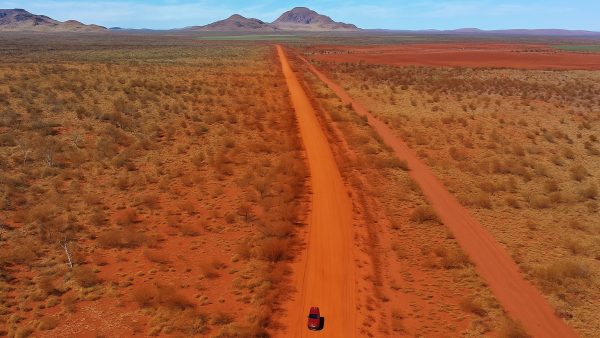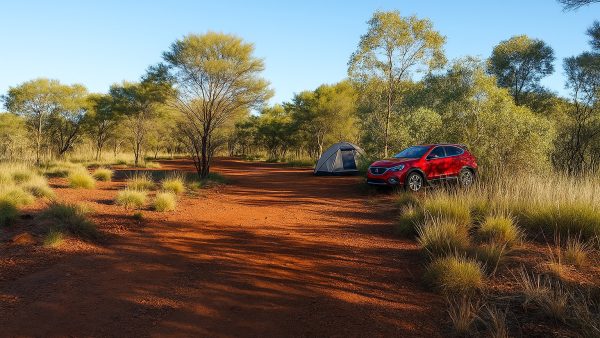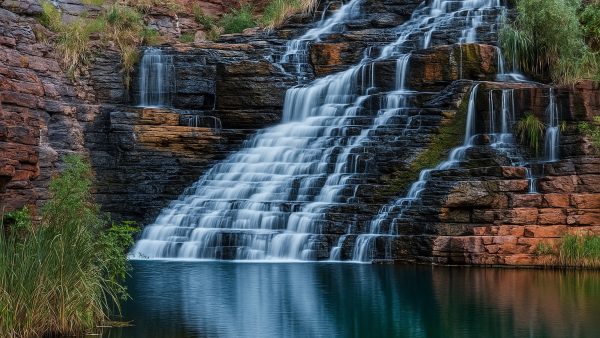Camping, walking, and canyoning in Karijini National Park
Tucked deep into the heart of Western Australia’s remote Pilbara region, Karijini National Park feels like it belongs to another world entirely. With plunging red rock gorges, crystal-clear waterholes, hidden waterfalls, and hiking trails that’ll make your calves beg for mercy, it’s the kind of place that gets under your skin—in the best way.
I’ve travelled a fair whack of this country, but Karijini is one of those rare spots where nature still feels raw, ancient, and untouched.
The best time to visit Karijini National Park
Now, before you chuck your swag in the back of the ute and head north, timing matters. The best time to visit Karijini is during the cooler, dry months from May to September. This is when daytime temps sit comfortably between 20–30°C, the skies are mostly clear, and the nights are crisp but not bone-rattling cold. Summer (November to March) is scorchingly hot—often nudging into the 40s—and the risk of flash flooding in the gorges makes it unsafe.
If you want to swim in the pools without turning into a human icicle, late May or early September hits that sweet spot—warm enough to enjoy the water, cool enough to walk without sweating like a roo in a sauna.
Unmissable gorges: Nature’s masterpieces
Karijini is gorge country. Carved over two billion years, the gorges here aren’t just big cracks in the ground—they’re natural cathedrals with walls that glow red and orange under the WA sun. Start with Dales Gorge: it’s easily accessible and offers a great intro to the park’s landscape. The loop walk from Fortescue Falls to Fern Pool is a must-do—cool, clear, and shaded by ghost gums and fig trees.
Further west, Hancock Gorge and Weano Gorge ramp up the adventure. Think tight rock scrambles, wading through waist-deep water, and heart-in-mouth descents. The payoff? Spots like Kermits Pool, where the rock formations look like something straight out of a fantasy novel.
And for something a little quieter, Hamersley Gorge in the northwest corner delivers bold, swirling rock patterns and a deep, tranquil pool perfect for a cheeky afternoon swim.
Karijini walks: From casual to canyoning
There’s no shortage of Karijini walks for every ability level. Some are easy enough for a post-brekkie stroll, while others will have you scrambling on all fours. The Joffre Falls lookout walk is short and sweet, with cracking views down into a massive natural amphitheatre. For a bit more legwork, tackle the Knox Gorge descent—steep and slippery but worth every step for the sheer drama of the canyon walls.
And if you’re a thrill-seeker, Karijini offers guided canyoning adventures through the Class 5 terrain of Hancock Gorge. It’s ropes, helmets, water crossings and a big dose of adrenaline. Not for the faint-hearted—or the flat-footed.
Top highlights and hidden gems of Karijini
- Fern Pool – A sacred site for local Indigenous people and one of the best places for a quiet dip.
- Mount Bruce (Punurrunha) – WA’s second-highest peak. If you’re game, the summit trail takes around 5 hours return and offers panoramic views of the Hamersley Range.
- Oxer Lookout – Perched above the junction of four gorges, this viewpoint is pure goosebump territory at sunrise.
- Hamersley Gorge spa pool – A tucked-away rock pool that acts like nature’s own jacuzzi after a long, hot walk.
Where to stay: Camping and eco-retreats
Karijini camping is all part of the experience. You’ve got a few options:
- Dales Campground (Parks & Wildlife-run): Basic bush camping near Dales Gorge. No power, but clean drop toilets and shady sites.
- Karijini Eco Retreat: Glamping with a conscience. Think safari tents, private ensuites, and a killer restaurant serving local bush tucker-inspired meals.
- Free bush camps outside the park boundary if you’re self-contained and looking to save a few bucks.
Book ahead in peak season—this place might be remote, but it’s no secret.
Karijini National Park by road
Karijini is in the Pilbara region, about 1,400 km north of Perth. You can reach the park by road via either a coastal or inland route, depending on your itinerary. Both options are suitable for a self-drive adventure, particularly if you’re keen to explore more of regional WA along the way.
The coastal route will take you through Jurien Bay, Horrocks, right up to Kalbarri and Carnarvon before working your way inland past the Hamersley Range to Karijini.
The inland road trip (my favourite) will take you through Meekatharra, the Tropic of Capricorn and Newman. You can then continue onwards to your destination of Karijini. Both options offer stunning landscapes, remote roadhouses, and that sense of vastness that makes WA road trips so addictive.
Flying is also an option. The nearest airports are in Paraburdoo and Newman. From there, you can hire a 4WD and drive into the park. The roads into and around Karijini are mostly gravel—passable with a 2WD in dry conditions, but a 4WD gives you freedom (and peace of mind).
There’s no fuel in the park, so fill up at Tom Price or Auski Roadhouse. And don’t expect mobile coverage—download your maps and let the world go on without you for a while.
My verdict
If you want to reconnect with country, walk ancient paths, and stand in awe beneath walls older than dinosaurs, Karijini National Park is the real deal. It’s not polished. It’s not packed with amenities. But that’s the magic—just you, the red dirt, the gorges, and the sky. Go with respect, take your time, and Karijini will leave a mark on your memory like red dust on a pair of old boots.
- The road in to Karijini National Park
- Dales Campground
- Fortescue Falls in Dales Gorge
- Stay at the eco lodge as a special treat
- Dales Gorge in Karijini National Park
Practical Information
- Location: Karijini National Park, Pilbara, Western Australia
- Best time to visit: May to September (dry season)
- Getting there: Fly into Newman or Paraburdoo; 4WD strongly recommended
- Park entry fee: $17 per vehicle (as of 2025)
- Opening hours: Open year-round, 24 hours (though parts may close after heavy rain)
- Camping: Dales Campground (book via WA Parks), Karijini Eco Retreat
- Mobile reception: Limited to none. Satellite comms recommended
- Safety tips: Watch for sudden weather changes, don’t swim after heavy rain, wear shoes with grip for walking
- Facilities: Drop toilets, picnic shelters, limited fresh water—bring your own supplies











Leave A Comment